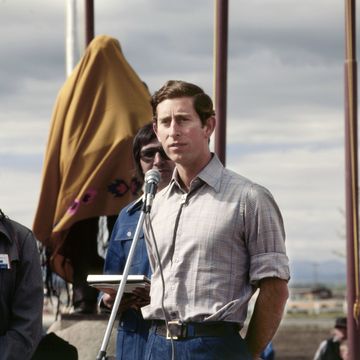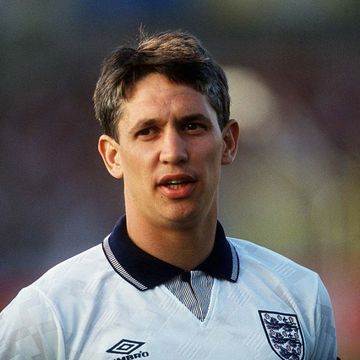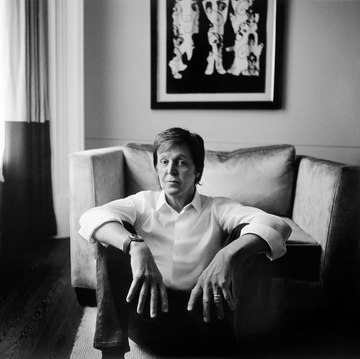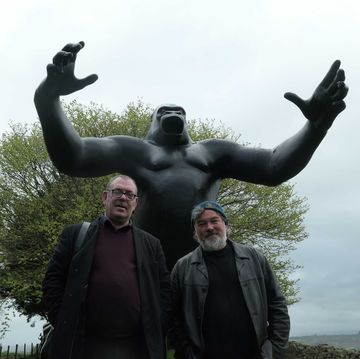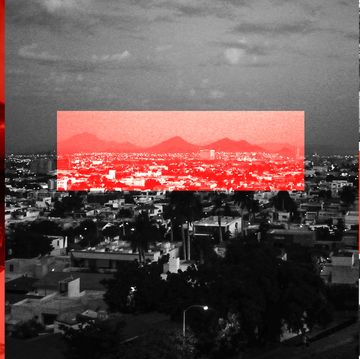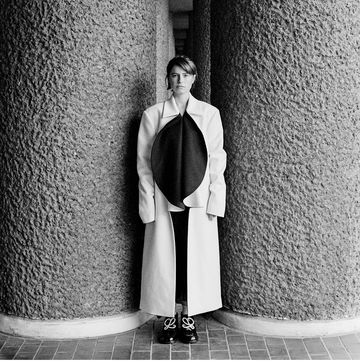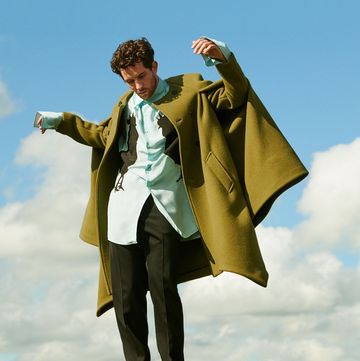Henry Fonda wasn’t holding back. Not even a little.
It was October 1970, and the 65-year old Hollywood legend had recently watched his son Peter on The David Frost Show.
Peter wasn’t the problem. Fonda’s son had come out, shaken Frost’s hand, and taken his seat—like a goddamn normal person. No, the thing raising Fonda’s blood pressure was what happened next, when Peter’s friend, Dennis Hopper came on stage.
“Dennis came out floating,” Fonda later told a New York Times reporter. He demonstrated what he meant by flouncing about the living room of his Manhattan apartment with arms spread wide and head tossed backwards. “And every time Frost asked him a question, he began giggling… Dennis is stoned out of his mind. He’d have to be to act that way.”
“Put that in your story,” Fonda told the reporter. ‘This is not off the record. Dennis Hopper is an idiot. Spell that name right D-e-n-n-i-s H-o-p-p-e-r!”
Reached at his home in Taos, New Mexico, Hopper laughed when told about Fonda’s rant. “Henry Fonda said I was an idiot?” Hopper said. “Well, I guess it goes to show you what the establishment view of me is.”
Hopper could afford to be amused. After years of being regarded by much of the old guard as an ill-mannered, drug-addled lunatic, he was now possibly the hottest filmmaker in Hollywood. Easy Rider, which Hopper had made for less than half a million dollars, was the surprise smash of 1969, grossing $60 million and seemingly striking a death blow to the studio system that nourished the elder Fonda.
Hopper’s overnight transformation from unemployable fuckup to Wellesian genius was made exponentially more aggravating when Universal gave him total control over his next picture, on which he was currently in post-production: The Last Movie, which Hopper wrote, directed, starred in, and edited. He declared it “the first American art film.”
Hopper was keenly aware that the project would determine the course of his future, as he told the endless stream of reporters who visited him on the film’s set. “The Last Movie is the big one,” he told one writer. “If I foul up now, they’ll say Easy Rider was a fluke. But, I’ve got to take chances to do what I want.”
And, true to his word, that’s exactly what he did.
HOLLYWOOD, 1965-1969
The idea for The Last Movie came to Hopper in 1965 at a wrap party for the John Wayne film The Sons of Katie Elder in Durango, Mexico, a popular location for Hollywood westerns.
Katie Elder was Hopper’s first Hollywood movie since the 1958 western From Hell to Texas, also directed by Henry Hathaway, who had effectively blacklisted the actor after his Method approach slowed down production. Things came to a head one night when Hopper turned the set into his own personal Actor’s Studio, trying every possible approach other than Hathaway’s for eighty-five takes before bursting into tears of frustration and begging the director to give him his line readings one last time. When they were done, Hathaway threw an arm around Hopper and said, “Kid, you’ll never work in this town again.”
For the next six years, Hopper didn’t appear in a single Hollywood film and struggled to find work even in television. But in late 1964, Hathaway and Wayne decided that the 28-year-old actor—who was then married to Brooke Hayward, the scion of a prominent Hollywood family, and had a young daughter to support—had suffered enough.
On his best behavior throughout the Katie Elder shoot, Hopper became fast friends with 22-year old actor Michael Anderson Jr. “We were the only two people under 100,” Anderson said. When the film wrapped, Hopper and Anderson attended a party thrown by a stuntman who’d rented a house in Durango. They spent the evening smoking pot and staring into an outdoor fireplace in relative silence, until Hopper turned to Anderson and said, “Hey man, I just had the best idea for a movie. It’s about making movies and the effect it has on people, and what they do when a movie company leaves town.”
Hopper teamed up with screenwriter Stewart Stern. Stern’s personal papers—containing everything from his high school academic records, correspondence with Joan Crawford and Paul Newman, and scripts for pictures like Rebel Without a Cause, his best-known movie (and Hopper’s film acting debut)—make up 22 boxes located in a special collections library at the University of Iowa. For years, only one of those boxes was unavailable for public view: Box 22, which contained the materials for The Last Movie and was placed under seal until after both Hopper and Stern were dead. Its contents tell a portion of the story of Stern’s collaboration with Hopper, which began when Hopper returned to Los Angeles and settled in at Stern’s house to write a treatment for what they were calling The Last Movie, or Boo Hoo in Tinseltown.
“Dennis would stride back and forth in the room and we’d spitball ideas,” Stern said. “I sat at the typewriter and he’d walk behind me with his joint and he’d be raving, ‘I bet you could really write if you had a little joint.’ I said, ‘Well I just won’t do it, it makes me hallucinate.’ So he said, ‘There’s something called a bong, you just inhale it over water.’”
As Hopper blew smoke down the snorkel of Stern’s scuba mask, the pair wrote a 98-page outline for the story of a broken-down stuntman named Tex who shacks up with an indigenous girl and stays behind in a small Latin American town where a western has just wrapped. After watching the film company shoot their western, the natives begin to reenact its making as a religious ritual using the old sets, as well as cameras and other equipment they’ve made out of sticks. Tex, meanwhile, plans to seek his fortune by developing the town as a location for future productions. “He’s Mr. Middle America,” Hopper said. “He dreams of big cars, swimming pools, gorgeous girls. He’s so innocent he doesn’t realize he’s living out a myth. Nailing himself to a cross of gold.” The natives, however, do understand, and create a passion play of “greed and violence” using Tex as the doomed Christ figure in their deadly ceremony.
“The end,” Hopper said, “is far out.”
Stern’s notes from 1965 also include a list of actors who could play Tex, including Lee Marvin, Andy Griffith, Sterling Hayden, William Holden, and their first choice, Montgomery Clift. Henry Hathaway and Dominick Dunne were jotted down as potential producers, but the first person attached to the project (albeit briefly) was Richard Rush, who later produced and directed The Stuntman. Rush agreed to produce, but privately wrote to Stern expressing his concerns about Hopper: “The first problem we have to deal with is your involvement and Dennis’s authoritarianism.”
By the spring of 1966, Rush was no longer involved and the project was now in the unlikely hands of 26-year-old music impresario Phil Spector, who considered Hopper to be an “American Truffaut,” and was considering making The Last Movie his first foray into film. “Spector was a terrifying man, extremely wrapped up in himself,” according to Stern.
With Spector promising to back the film and “carry the film to Cannes under his arm” if necessary. Hopper and Stern wrote a 119-page screenplay in three days and seemed ready to move forward until Montgomery Clift died that July at the age of 45. With Spector’s money behind them, Jason Robards agreed to play Tex, leading a cast that included Jane Fonda, Jennifer Jones, and Joseph Cotten. The film would be shot in Mexico by Haskell Wexler with a start date of October 15, 1966.
Then things got weird.
“Dennis wants me to waive all creative control,” Stern wrote. Hopper called him, claiming that Spector was threatening to pull out of the project if Stern didn’t reduce his stake in the profits. “I could tell he was phoning me from Phil Spector’s house,” Stern wrote. “Because I could hear the Mynah bird in the background.”
The ill-fated partnership with Spector ended with depositions for what would have been a great lawsuit. Three years later, emboldened by Easy Rider’s success, Hopper pitched The Last Movie to BBS—the production company founded by Bert Schneider, Bob Rafelson, and Steve Blauner that had backed Easy Rider.
Schneider and Rafelson had no interest (“Dennis began to believe his own myth,” Rafelson says) while Blauner was intrigued—that is until Hopper, then 33, explained that he would play the broken down, middle-aged stuntman (now named Kansas, after Hopper’s home state) himself. BBS passed, and The Last Movie wound up at Universal, which had established a young director’s unit that sought to mimic BBS’s low budget, high-return approach. Desperate to capture the youth market, Universal gave Hopper final cut so long as he brought in the project under the budget of $850,000-$1,000,000. Hopper agreed to work for $500 a week on the condition that he would receive 50% of the profits from his new film, which seemed sure to be a hit.
PERU, WINTER 1970
For the first two weeks of production, Hopper’s plan was to shoot the “film within a film” in Chinchero, Peru, two and a half miles above sea level—and frequently above the clouds. Surrounded by the snow-capped Andes, the village looked down upon valleys of lush, radiant green, dusted with areas of golden yellow.
In late January, Hopper was joined by the cast of the fake western: hard-living friends like Dean Stockwell, Russ Tamblyn, Peter Fonda, and Robert Mitchum’s son, Jim. That group, along with Henry Jaglom and Toni Basil, gathered at LAX to take a chartered flight down to Peru. As flight time neared, some of the actors began to wonder about John Barrymore Jr. (scion of the legendary acting family and father of Drew), who had yet to show up to the airport. They later learned he and Jim Morrison of The Doors, had been unexpectedly detained in Arizona.
“They’d gotten into trouble the night before at their hotel in Tucson, [where they were] crawling around on all fours, barking like dogs,” according to Jim Mitchum. “Then, when they got to the airport they were carrying on and when they got on the plane to L.A., one of them made a crack about a bomb, which didn’t go over too well.”
Back at LAX, the plane took off, bound for Cuzco, with a layover in Lima. “Ten minutes in the air and the cabin is a fog of marijuana smoke,” Jaglom wrote in his diary.
As they got closer to Lima, someone began trying to get the stewardesses high with them, which resulted in a call to air traffic control, who were ready to arrest everyone on board as soon as they touched down. Getting wind of this, one of Hopper’s producers phoned the head of the airline and arranged for them to elude the police by deplaning and boarding their flight to Cuzco directly from the tarmac. “An international flight! I mean, I expect people to be cool!” Hopper later told a reporter. “I carry nothing across international borders! I’m paranoiac enough without making that scene!”
Hopper held an initial wardrobe meeting at an old Victorian hotel where most of the cast was staying. Everyone pounded Pisco Sours (the powerful national drink made from high-proof Peruvian brandy) and tried on their western gear at 12,400 feet above sea level. Sylvia Miles, who’d handed her bags to a Peruvian general upon arriving at the hotel, got up to go to the bathroom and passed out from altitude sickness. She was not alone, as pretty much everyone wound up battling it at one point or another.
“I watched [cinematographer] Laszlo Kovacs walk up a little grade in the village,” says stunt coordinator Chuck Bail, “and when he got there he fell flat on his face. He didn’t even put his hands out in front of him.”
While it’s hard to make a movie (and even harder to make it at such a high altitude), the difficulties are compounded even further when there are people following your every move. A group of mostly worshipful reporters from The New York Times, Life, Look, Rolling Stone, and Esquire came and went throughout the shoot. The most critical of those writers was Brad Darrach of Life, who described the first few days on set as follows:
“Somebody made a cocaine connection and a number of actors laid in a large supply at bargain basement prices…. By 10 p.m., almost 30 members of the company were sniffing coke or had turned on with grass, acid, or speed. By midnight, much of the cast had drifted off to bed by twos and threes. At 2 a.m., I was wakened by screams. A young actress had taken LSD and was ‘having a bummer.’ At 3 a.m., I heard a rapping on the window beside my bed. A young woman I hadn’t met was standing on a wide ledge that ran along the side of the hotel just below the windowsill. It was raining and her nightgown was drenched. ‘Do you mind if I come in?’ she asked vaguely.”
According to Darrach’s account, one actor almost died after eating five peyote buds at the same time. There were “whipping parties,” and a woman who was said to look like Joan of Arc was tied up, with a fire burning at her feet.
Two actors disappeared for several days each: one (Billy Gray) after trying to climb down Machu Picchu, the other (Rod Cameron) after falling off the wagon when Jim Mitchum bought him a drink.
It was, Michael Anderson says, “a Dennis Hopper production.”
Despite the initial drug-fueled mania, the shoot was a smooth one. Everybody on set loved Hopper and believed in what he was doing. The cast and crew worked 12-hour days, six days a week; those who took acid only did so on Sundays out of respect for their director. “He’s a genius,” one crew member said. “He feels deeper than other men… I’m not queer, but I swear, I love this guy. I almost love him physically.”
Hopper also seemed to have a strong understanding of how to handle performers, and generally treated them in a friendly manner, calling everyone (even the actresses) “man.” “Working with Dennis was both invigorating and fulfilling,” said actress Julie Adams, who played the sultry wife of an American businessman in the film. “He gave me more artistic freedom than I’d ever had in front of the camera before.”
Some of it was simply instinct for Hopper, who as a photographer had done work for national magazines, and had amassed what would become a multi-million-dollar art collection. “He kind of made up the stuff as he went along,” Bail says. “He and Laszlo worked together so well, because they’d worked together… Dennis would just stop and turn and say the sun is in a perfect position and they’d open the doors and shoot something else.”
Surrounded by more incredible imagery than he’d ever imagined, Hopper ran wild with the talented DP Laszlo Kovacs by his side, capturing the most beautiful footage he may have ever gotten on film and adding layer upon layer of visual meaning to The Last Movie, following the general outline of the script but improvising all of the dialogue and scenes within it.
“I’m not afraid to start work with an empty head,” he told a reporter. “If you can’t create in the moment, you’re not creating.” The cast and crew followed Hopper’s lead and went with what he described as the “moment to moment reality” that presented itself to them each day. Hopper “knew what he was doing even when he didn’t know what he was doing,” according to actor Don Gordon.
“First, man, I want to make the audience believe… I want to build a reality for them,” Hopper explained to one reporter. “Then toward the end, I start breaking down that reality so that it, uh, deals with the nature of reality.”
Hopper’s multi-level reality involved filling the actual Chinchero village square with sets that approximated an old western town, including a jail, hotel, saloon and a church run by a priest who is killed during the climactic religious ceremony. After the shoot, the villagers asked Hopper and Lewis leave the sets behind to be used as a tourist attraction. (Hopper declined the request and told them to use the construction materials to build a school.)
“Suddenly you’re 33, in Peru with a gang of guys who are living up to their reputations,” Kris Kristofferson, a then-unknown singer who had been cast in a small role, later reflected. Like his character Kansas, Hopper was sleeping with a local woman. “[He] did what he was filming.” Kristofferson said. “He was filming the corruption of a little town by the movie people—and I mean they ruined this town. I think he got a priest defrocked.”
A simple idea that had sprung from a night by the fire in Durango had now become the kind of picture that nobody on the set—including Hopper—could describe in a few sentences, much less a couple of paragraphs, or even an entire script.
TAOS, SPRING 1970-SPRING 1971
Hopper used some of his Easy Rider money to purchase a sprawling estate in Taos, New Mexico, that included a 22-room adobe house once owned by Mabel Luhan Dodge, a self-styled Southwestern Gertrude Stein. “The Mud Palace,” as the house was called, had been a commune and spiritual oasis for artists like Georgia O’Keefe, Aldous Huxley, and D.H. Lawrence, who painted the windows in one of the bathrooms.
Keeping the original furniture—and Lawrence’s windows—Hopper covered the walls with recent works by Warhol, Ed Ruscha (including his famous Standard Station), Jackson Pollock, and the experimental artist Bruce Conner—a close friend who, along with an ever-rotating cast of artists, musicians, filmmakers, journalists, and groupies (known as “ding-a-lings”), lived in the house with the editors who’d been hired to help turn more than 40 hours of footage into a two-hour movie. Hopper began editing in late spring 1970, planning to spend an entire year searching for his story, which he was convinced would be a masterpiece.
And it was in Taos, Michael Gruskoff says, where “the problems, the big problems, began.”
Now divorced from Hayward, Hopper became engaged to singer Michelle Phillips of The Mamas and The Papas, whom he’d also cast in The Last Movie. Roughly five months into editing, Hopper married Phillips on October 31, 1970, before a small group of guests who gathered at his home in Taos, which Hopper had decorated with hundreds of candles stuck in paper bags. “He told everyone to wear white chiffon,” says Michael Anderson. “Two people caught on fire.”
The marriage didn’t fare much better. Described by singer John Phillips, Michelle’s ex, as “the six days war,” it actually lasted for eight, which Hopper allegedly spent screaming that his new wife was a witch, shooting guns in the house, and handcuffing her to the bed in an attempt to keep her from escaping, which she did nonetheless. Waking up one morning to find his wife gone, Hopper jumped in his car and chased Phillips to the airport, where he drove onto the runway and tried to stop her plane.
Speaking on the phone a few days later, Hopper told Michelle, “I love you. I need you,” to which she responded, “Have you ever thought of suicide?”
“Dennis drank occasionally, meaning like all the time,” says Todd Colombo, one of Hopper’s editors. “He drank enough to kill me.” Notwithstanding the joint seemingly affixed to his hand (and his proclivity for downing peyote buttons with a can of Coors), Hopper was able to function at a high level when necessary and worked incredibly hard when he was in the editing room (albeit at odd hours, one advantage of having your editors live with you).
“I came in one time [and] he was on his butt on the floor of the editing room, just gone,” recalls his assistant Diana Schwab. “He looked at me and stood up. He was perfectly in control. He was Dennis Hopper being Dennis Hopper, even when he was stoned out of his mind. He was the consummate actor.”
And he was doing just that for a documentary crew led by L.M. Kit Carson and Lawrence Schiller that had descended upon Taos to make American Dreamer, a film about the post-production of The Last Movie. “He was living the life of his character out of Easy Rider,” Schiller said of Hopper, who was “stoned all the time, carrying around an AK-47.”
Actor Dean Stockwell recalls that “Dennis was very fond of guns at the time. Once in a while he’d go up on the roof and fire off a couple of rounds into the sky…. I remember two or three times, inside the house, he’d take a revolver and shoot it at the ceiling.”
Perhaps the most notable of those incidents occurred in February 1971, when Hopper had just spent 52 straight hours in the editing room cutting the film down in order to show it to Cannes founder and President Favre LeBret and several of his colleagues in anticipation of showing The Last Movie at their festival.
Not long before, Hopper’s editor had either left or been fired, after allegedly becoming involved in a Mud Palace love triangle and producing a semi-final cut of the film that wasn’t in accord with the director’s vision. Bringing on Colombo and Rol Murrow to help him edit, Hopper screened 40 hours of footage at the El Cortez, a theater he’d purchased on the outskirts of Taos for this very purpose, then dissecting it scene by scene in the little editing studio at Hopper’s house—then did it again and again, getting down to five hours, then four, and finally two, all the while trying to find a workable narrative that wouldn’t destroy Kovacs’s imagery.
Satisfied, they showed a rough version to the group from Cannes, who seemed fairly indifferent to the results. After the screening, everyone had drinks in the kitchen at the Mud Palace where LeBret and his friends began speaking to each other in French. Hopper, sitting by himself, pulled out his gun and put a bullet through the ceiling, apparently missing his brother David—who, unknown to Hopper, was directly upstairs—by only a few inches.
“He got everybody’s attention,” Colombo recalls. “There were a number of things like that, to get the attention back where it belongs.”
Meanwhile, in Hollywood, Universal boss Lew Wasserman was putting enormous pressure on Danny Selznick and Ned Tanen, the two executives in charge of the young director’s program who were responsible for managing The Last Movie. Over the course of Hopper’s time in Taos, the studio had done everything they could to keep an eye on him, at one point calling Jim Mitchum to find out what was going on. (Mitchum’s assessment: “He was out of control in Taos, things were crazy.”) Gruskoff, now working for Universal, offered to go down, feeling responsible because he’d been the one who negotiated final cut for Hopper in the first place.
Immensely fond of Hopper, Gruskoff tried to discuss the commerciality of the project with his friend and encouraged him to simply finish the film and move on to his next project, but quickly realized that he wasn’t getting anywhere. “He was getting stranger and stranger,” Gruskoff says of his trips to Taos. “It was his movie, and in his mind he knew better than I did.”
Tanen and Selznick tried to keep tabs on the film by phone, but they were hamstrung by the fact that Hopper had final cut and was doing whatever he wanted, which included instructing his editors to tell Selznick that Eldridge Cleaver and the Black Panthers had raided the editing room and stolen the film.
Eventually, Tanen flew to Taos and arrived by limo at the Mud Palace, where he found an orgy in full swing and was immediately confronted by Lawrence Schiller, who stuck a camera in his face. “Please don’t do that,” the famously hot-tempered studio exec told Schiller, who continued filming. Trying to remain polite, he repeated his request, but Schiller didn’t budge, at which point Tanen tore the camera out of his hands and threw it out the window, screaming, “You fuck! I’ll kill you, fucker!” (Watching all of this, Hopper asked for a camera so he could keep shooting, as the orgy continued in the background.)
Hopper wasn’t opposed to outsiders offering artistic advice for his film. Nicholas Ray, who’d directed Hopper in Rebel Without a Cause, had fallen on hard times and had been living at the Mud Palace, where he was running up the phone bill and encouraging Hopper to take more and more risks as he cut the film. (When the phone bill hit somewhere around $30,000, Hopper found Ray a teaching job on the East Coast just to get him out of the house.) The most controversial artistic influence on The Last Movie, however, was Alejandro Jodorowsky, the director of the acid western El Topo, who was one of the very few people around Hopper who neither smoked nor drank.
Jodorowsky’s role in editing The Last Movie has long been the subject of debate. Some claim that the Chilean filmmaker watched a nearly complete version of the film and told Dennis that it was nothing more than a conventional Hollywood movie, encouraging him to strip out the narrative and put it back together like a Cubist painting. (Lawrence Schiller claims Jodorowsky “destroyed the film.”)
Jodorowsky, however, claims the opposite. In his version of the story, Hopper’s film was a mess when he arrived in Taos, and Jodorowsky personally spent several days re-editing the entire picture, giving it a clear narrative line and bringing the story to a deeply moving conclusion. The difference between his cut and Hopper’s, Jodorowsky explained to me via email, was “the difference between the vision of an artist who takes drugs all day and the vision of an artist who searches a profound truth in abstinence.”
It has been suggested that Jodorowsky’s version still exists somewhere, though it has never been found.
HOLLYWOOD, SUMMER 1971
In June, Hopper and his editors had loaded the film on a flatbed truck bound for Hollywood, where they would do the final post-production work and get it ready for release. Despite the chaos of the prior year, Hopper had made progress with the film’s edit. “[The film] got better and more cohesive and shorter,” Rol Murrow said. “It had a beginning, a middle, and an end.”
Late one night, however, when the team was working in a Los Angeles editing room on what was nearly the final cut, Hopper, who’d been out with friends, burst in and excitedly told them about a new idea. “I’ve had a vision,” he told them. “Take about the last ten minutes and put it on the beginning of the movie, then go into the opening credits.” What had been a challenging movie to begin with—and had become more challenging as it went through innumerable iterations in which Hopper struggled to find the core of his story and meld it with his beautifully composed cinematography—had become something akin to a piece of abstract art.
The result, according to Murrow, was “hard for people to see.”
The executives from Universal gathered in a dignified, elegant executive screening room, decorated like a European drawing room with a retractable oil painting in front of the screen, to watch The Last Movie. They sat in total silence for the duration of the film. “Not a single word” was said, according to producer Paul Lewis. When it was over, a projectionist was overheard telling someone that the movie was aptly titled, since it was undoubtedly the last movie Hopper was ever going to be allowed to make.
MCA founder Jules Stein, who had enormous affection for Hopper and had encouraged Lew Wasserman to work with him, stood up, wiped his glasses, and said, “I’ll never understand this younger generation.”
Wasserman, meanwhile, was enraged and insisted the movie be recut. Hopper refused. The Universal head said that he simply wouldn’t release the picture, but this was an empty threat, since he was contractually obligated to open and promote it in New York and Los Angeles at theaters selected by Hopper’s representatives. The studio planned to do the bare minimum that was required of them. Hopper decided to promote the film on his own; he took it to the Venice Film Festival, where it won the Critics Prize, but did little to improve his standing with Wasserman, Universal, or its distributors.
“It’s a test for me and it’s a test for the audience, to see if there’s an audience out there,” Hopper said. “I think people will have to see it twice before they understand it. That’s a strange thing to ask people to do.”
When it opened at New York’s RKO Theater that September, The Last Movie broke the theater’s single-day ticket sale record—before dropping off precipitously and being withdrawn after two weeks. Savaged by critics, seen by almost no one, and completely unsupported by the studio, The Last Movie limped into Los Angeles for its premiere at the end of October 1971.
Two days later, Hopper appeared on The Merv Griffin Show, where he sauntered on stage in a denim ensemble with a droopy mustache and a bandana. Seemingly stoned, he joined an unlikely panel that included James Brolin and Willie Mays.
Griffin congratulated Hopper on being a “big filmmaker.”
“I was a big filmmaker,” Hopper responded.
“Have you hit bottom?” Griffin asked kiddingly.
“No,” Hopper said, despondently. “I’ve hit the top.”
Indeed he had, and it was no place for an artist.
The Last Movie was recently restored in 4K by Arbelos Films and received a nationwide re-release in August of 2018, including openings in New York at the Metrograph cinema and Los Angeles at the Egyptian Theatre. The film will be available to stream and purchase on Blu-Ray on November 13.



